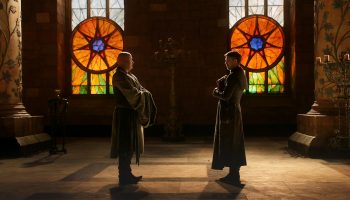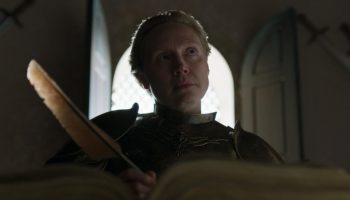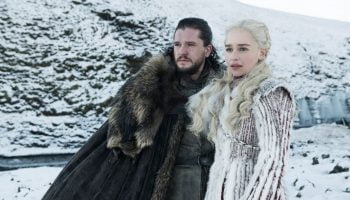Dr. Finn’s book, Fan Phenomena: Game of Thrones, is available here!
As a medievalist and early modernist, it’s easy to get sucked into the rabbit hole of finding parallels between the universe of Game of Thrones (and the book series on which it is based, A Song of Ice and Fire by George R.R. Martin) and our own. Martin has said that he was inspired by the Wars of the Roses, the Hundred Years’ War, and the Crusades. But he also cautioned readers not to look too closely into apparent parallels between his world and ours. In a 2005 interview with Roz Kaveney of The Independent, he explained that he used “a mix-and-match approach” to history and that “anyone who thinks that by identifying my source material they can predict my plot is going to be severely misled.”
That hasn’t stopped anyone from trying, of course, including me. Much virtual (and literal) ink has been spilled on the topic, but my interest in ASOIAF and GoT has more to do with the worlds of Westeros and Essos as refractions of medieval and early modern Europe rather than reflections. Reflections offer a mirror image, a glimpse into the medieval as it was; refractions, conversely, require that we look awry—to use Shakespeare’s phrasing from Richard II—and see not what actually happened but our own skewed perspective that shows us what we want to see. If our goal is to view the medieval as a Dark Age, safely tucked away behind centuries of progress, refraction is how we get there.
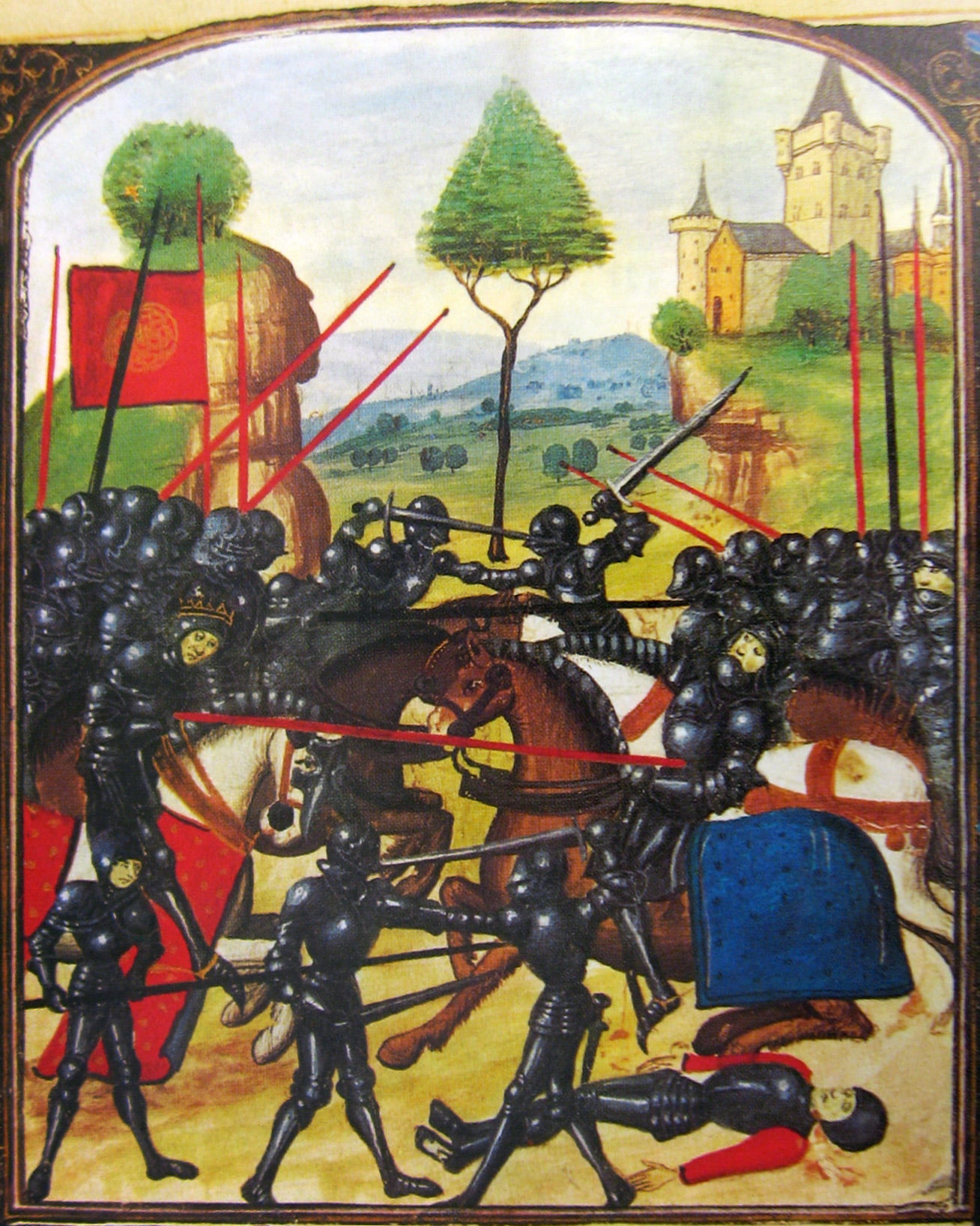
Maybe this is because I came to the books in a roundabout way. Back in the ancient year of 2002, I struck up a conversation at a party that somehow turned to my longstanding obsession with the Wars of the Roses—the civil wars that ravaged England for most of the fifteenth century. He asked if I’d read a book by some guy named George R.R. Martin that was “basically the Wars of the Roses with dragons.” The rest, one might say, is history.
I’ve always had an odd relationship with the story’s purported historicity. Martin’s mix-and-match approach to historical inspiration likely draws on secondary material rather than primary, which means that he is not using sources written down during the Middle Ages; he is instead using modern interpretations of those sources. There’s nothing wrong with that. But it does mean that there are several degrees of separation between the author (Martin) and medieval texts.
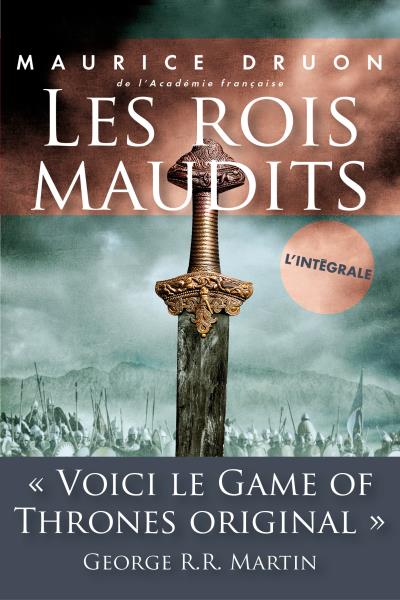
In addition to history books and biographies, Martin has also mentioned historical fiction novels, in particular the French series Les rois maudits (The Accursed Kings) by Maurice Druon. This series takes place between 1314 and 1420, covering most of the Hundred Years’ War. But it was written in the 1950s and thus reflects the cultural and social norms of that decade. It also reflects the state of scholarship then, or, since academic knowledge famously can take decades to spread into popular understandings, even older scholarship.
Perhaps even more so than nonfiction, fiction attempts to bridge the gap between medieval culture and contemporary culture. As a result, historical fiction tells us more about the author and their audience than about the period in which the story is set. Druon spins a fantastic story, and he offers a surprisingly sympathetic portrayal of King Edward II of England—surprising for the time because Edward was either bisexual or gay. But his female characters often end up falling into misogynistic stereotypes, and sexual assault is a frequent plot point.
Thus, the “history” behind A Song of Ice and Fire is a distillation of late 20th century popular history and Martin’s own aim to reinvent and reimagine Tolkienesque fantasy. That means many of the problems I have with the books (e.g. questionable gender dynamics, Orientalism) have their roots in what popular history was doing when Martin was writing the early books in the 1990s. This was still a very white, very male-dominated field, and those were the voices being amplified in both primary and secondary sources. While those conversations are getting (somewhat) more nuanced and diverse in academic circles, it hasn’t quite filtered into the popular consciousness.
In short, Martin’s “medieval” world in A Song of Ice and Fire bears little resemblance to the actual Middle Ages in Europe. When the first book was published in 1996, feminist and postcolonial perspectives were relatively uncommon in medieval studies. Most of the available books about these periods privileged the viewpoints of white men, even when other perspectives could be found in primary sources. Furthermore, many of these historians had been trained in a long tradition that was rooted in colonialist rhetoric. As I wrote elsewhere,
Although much has changed in academic medievalism since then, its popular counterpart remains trapped in assumptions born in the nineteenth and early twentieth centuries, and we can see those reflected in the racial and gender disparities at work in A Song of Ice and Fire and Game of Thrones.
Obviously, this isn’t meant to let the author off the hook for problematic content. There’s a disturbing focus on sexualizing very young women throughout the books. Most, if not all, of the non-white characters are presented through an exoticized, Orientalist lens. Orientalism, according to critic Edward Said, represents what the West does not wish to acknowledge within itself, which it then displaces onto an exoticized East. The Dothraki and the inhabitants of Slaver’s Bay are, with a few exceptions (Grey Worm and Missandei, to a lesser extent Irri, Jhiqui, and Doreah), an undifferentiated horde meant to serve as mere window dressing for Daenerys Targaryen’s journey. There are almost no significant female friendships, in contrast to the many examples of male friendship. The closeness between Daenerys and Missandei, for instance, is an exception that proves the rule.
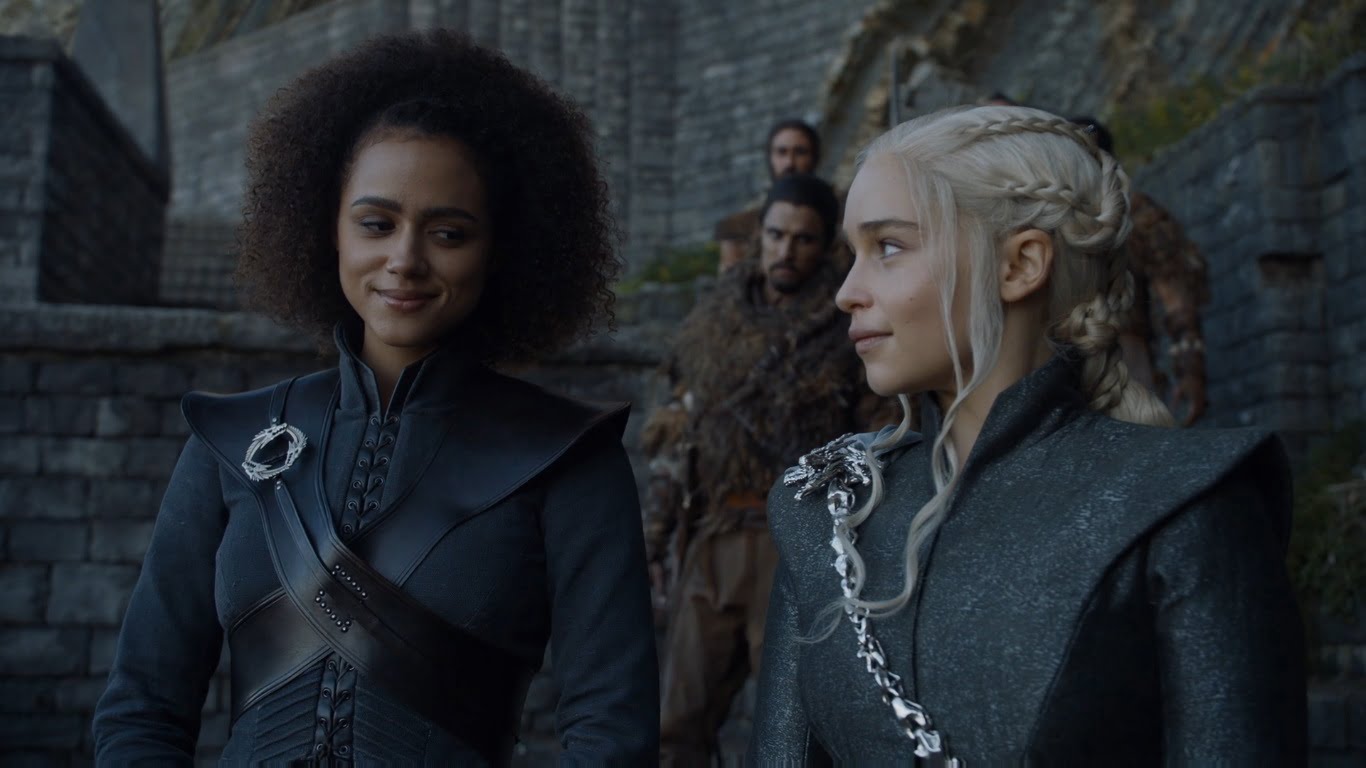
These issues are compounded in Game of Thrones; even the choice to make most of the main characters several years older than their book counterparts doesn’t make the women any less sexualized. And if we want to talk about Orientalism, the Dothraki in Game of Thrones are a textbook case, right down to their hopeless charge in “The Long Night.” This is not to mention the execution of Daenerys’ ally Missandei, the only named woman of color on the show, in chains at the end of Episode 8.04, in sharp contrast to other women such as Lyanna Mormont, who died fighting back against a clear enemy; or, in “The Bells,” the re-emergence of just enough Dothraki and Unsullied forces to massacre the citizens of King’s Landing while Jon Snow and his (literal and figurative) white knights mostly hold back on his orders.
This makes it all the more important for audiences and readers, as well as the showrunners and producers of Game of Thrones and its upcoming spinoffs, to stop making assumptions about the “accuracy” of Martin’s Middle Ages. His sources were steeped in outdated misogynist and colonialist perspectives, and while that isn’t necessarily his fault—he was working with what was readily available—it is vital to amplify the voices of those who have a better understanding of the real history and culture being exaggerated in Game of Thrones. We should perhaps be thinking more about what our fascination with this “grimdark Middle Ages” tells us about ourselves and our relationship to our own histories.
There is nothing wrong with loving Game of Thrones, A Song of Ice and Fire, and the vivid, immersive worlds that George R.R. Martin has created. Within the universe itself is a fantastical history full of holes and contradictions, rumors, songs, and stories, and I, for one, find those cultural aspects of worldbuilding to be especially interesting. The show’s unexpected use of a ballad of Jenny of Oldstones—a character and song introduced in A Storm of Swords as a tragic and romantic figure from Westerosi history—for instance, in “A Knight of the Seven Kingdoms,” was a beautiful grace note.
What we get is enough that I ache for more, and from a more-diverse range of perspectives. What would Catelyn’s chapters look like if she had a lady-in-waiting or two to give her support and solace during her long journeys with Robb Stark’s armies? What if Cersei had an Escadron Volant (a group of beautiful, accomplished, and charming ladies-in-waiting) to spy on her enemies like Catherine de’ Medici did in sixteenth-century France? One of the signature aspects of A Song of Ice and Fire is that Martin tells the story through the eyes of a range of characters (Tyrion, Jon, Sansa, Arya, and Daenerys, among others). But what if we had even a few point-of-view characters amongst the Dothraki or the citizens of Meereen to learn what they thought of the Mother of Dragons?
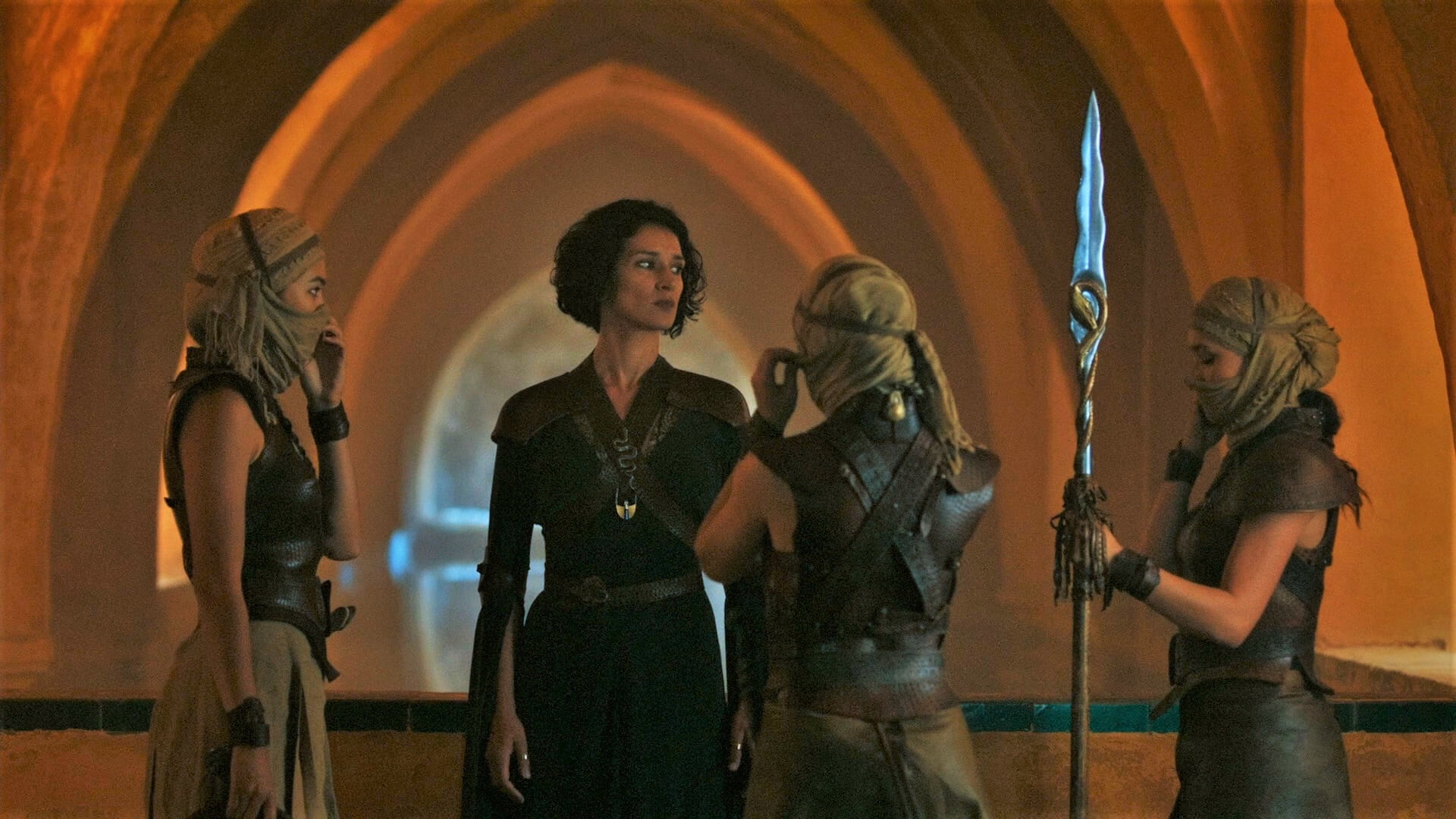
The same can be said of the show, which offers too few characters of color. In fact, Game of Thrones cut several prominent characters of color who appear in the books, most notably in the Season Five Dornish mess (I refuse to call it a plotline). What might the show have looked like to see Arianne Martell and Ellaria Sand arguing over whether or not Dorne should go to war with the Iron Throne? Where are the scenes of Arianne attempting to push Princess Myrcella into conflict against her brother Tommen?
We will never know, sadly. But even if we cannot have these things in the final season of Game of Thrones, perhaps the various spinoff series HBO has commissioned will offer a wider and more diverse sense of the worlds of Westeros, Essos, and beyond. And more than that, viewers and readers can demand more diverse, nuanced fantasy universes. Some of them may offer a better reflection of the Middle Ages; but even if they don’t, they may give us something wholly new and fascinating to capture our attention as Martin’s universe has.
Lastly, for those readers who might be considering writing their own fantasy novels with a medieval-ish setting, try thinking outside what pop culture tells you the Middle Ages is. Use your imaginations and create worlds that reflect not our worst impulses, but our better ones. Fiction doesn’t need to be grim to be realistic. Reality is far more interesting and diverse than that.
For Further Reading on Game of Thones and Medieval History
- Carroll, Shiloh. Medievalism in A Song of Ice and Fire and Game of Thrones. Cambridge: D.S. Brewer, 2018.
- Larrington, Carolyne. Winter is Coming: The Medieval World of Game of Thrones. London: I.B. Tauris, 2016.
- Pawlac, Brian, ed. Game of Thrones vs. History: Written in Blood. Oxford: Wiley, 2017.
If you enjoyed that article, please share it with your history-loving friends on Facebook, or on Twitter! And be sure to subscribe here to receive every new article from The Public Medievalist the moment it launches.
